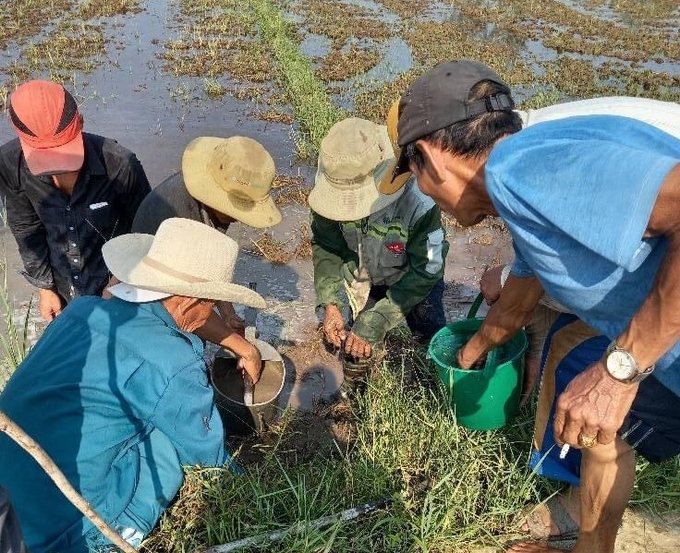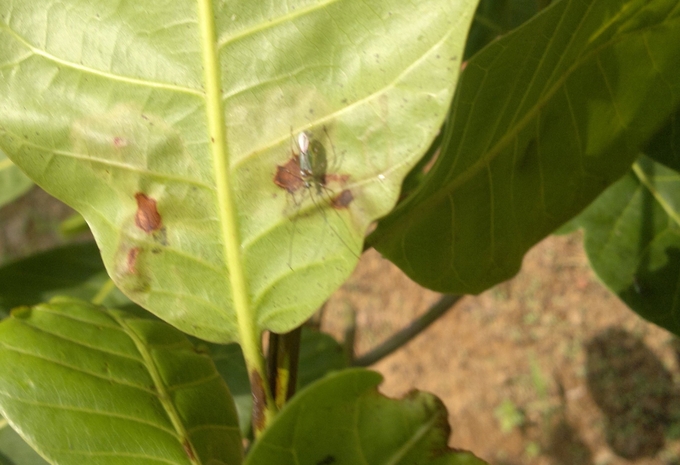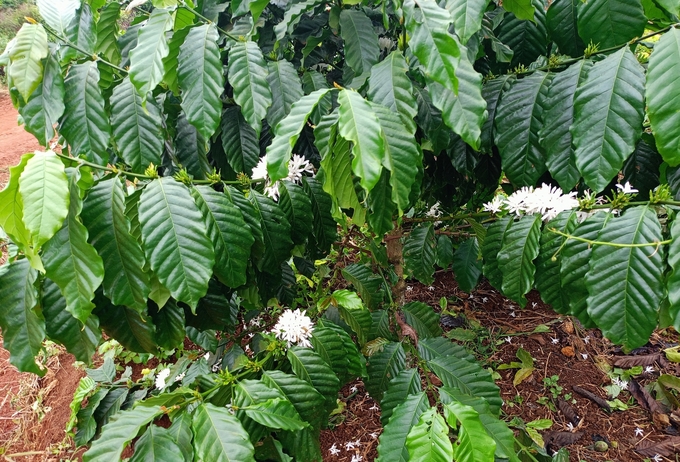According to the National Center for Hydro-Meteorological Forecasting, on the occasion of Tet At Ty 2025, the weather in the South Central Coast region will be cloudy, warm during the day, foggy at night and early morning, scattered rain; the Central Highlands region will be sunny during the day, cold at night and early morning, with thunderstorms in some places.
According to the Central Plant Protection Center (under the Plant Protection Department), the South Central Coast and Central Highlands provinces have planted nearly 244 hectares of winter-spring rice for the 2024 – 2025 crop. Of which, rice in the seedling – tillering stage is more than 185 hectares; the gathering – striking stage is more than 58 hectares. In addition, the main crops in the region such as rice, durian, cashew, coffee, etc. are in a vulnerable stage. This is also a favorable condition for harmful organisms to begin to arise and increase the danger.
To protect all winter-spring products 2024 – 2025 before, during and after the Lunar New Year 2025, the Central Plant Protection Center recommends that the Optimization and Plant Protection Branches of the provinces in the region, the Dak Nong Agricultural Development Branch and the Da Nang Agricultural Branch develop and implement the following company contents:
First, grasp the actual production situation in the locality (season, similar structure) and monitor the adverse impacts of the weather (unseasonal rain in the Central Highlands) affecting the growth of crops and the detection of organisms that are harmful to host animals in production to direct product protection.
Second, technical management tools in the area, often check throughout the field, especially arrange to be able to order online during the Lunar New Year to be sure of the situation and developments of harmful organisms; monitor forecast variations and direct timely prevention and control; Participate and distribute local mass media to propagate and guide farmers to visit fields regularly, detect and promptly handle harmful organisms with the highest risk of outbreak, especially regional epidemics.
Third, note some harmful organisms on major crops.

In particular, for rice in the South Central Coast region, it is necessary to pay attention to the occurrence of neck blast + neck panicle, brown planthopper + white-backed planthopper causing damage to early winter-spring rice at the panicle-heading stage; leaf blast disease arises and increases damage to main-season rice at the tillering – heading stage in warm sunny weather conditions, foggy evenings and early mornings, especially need to pay attention to prevention on densely sown rice, infected varieties, fields with excess nitrogen fertilizer and rice fields that have been infected with blast disease.
In the Central Highlands region, it is necessary to pay attention to stem borers, small leaf rollers, brown planthopper + white-backed planthopper causing increased damage to early winter-spring rice at the heading – heading stage; rice blast disease arises and damages rice at the tillering stage.
At the same time, strengthen the work of preventing rats and collecting golden apple snails to ensure safe winter-spring rice production.

For durian trees in the flower bud differentiation – flowering stage, it is necessary to pay attention to the increased damage caused by stem cracking and gummosis in unseasonal rains in the Central Highlands and in gardens with unbalanced fertilization and use of uncomposted manure. In addition, it is necessary to propagate, train and guide farmers to apply technical processes to manage diseases caused by Phytopthora fungi that damage durian trees when the disease occurs, clean the fields, and make drainage ditches to reduce the pressure of diseases caused by Phytophthora sp. .
Cloudy weather, high humidity, and dew also create favorable conditions for mosquito bugs and anthracnose to arise and increase damage to cashew trees in the bud and flowering stage. Therefore, it is necessary to strengthen propaganda and guide farmers to proactively prevent and control according to the technical process to manage mosquito bugs and anthracnose disease on cashew trees issued by the Plant Protection Department.

In addition, coffee is also one of the main crops in the Central Highlands. This is the time when coffee is in the flower bud differentiation – flowering stage, so it is necessary to monitor the mosquito bugs that harm coffee (Lam Dong), mealybugs, and scale insects that cause damage.
The Central Plant Protection Center also recommends that the Department of Cultivation and Plant Protection of the provinces in the region pay attention to some pests on specific crops in each locality and coordinate closely with the Center to direct good protection of winter-spring crop production in 2024 – 2025.
